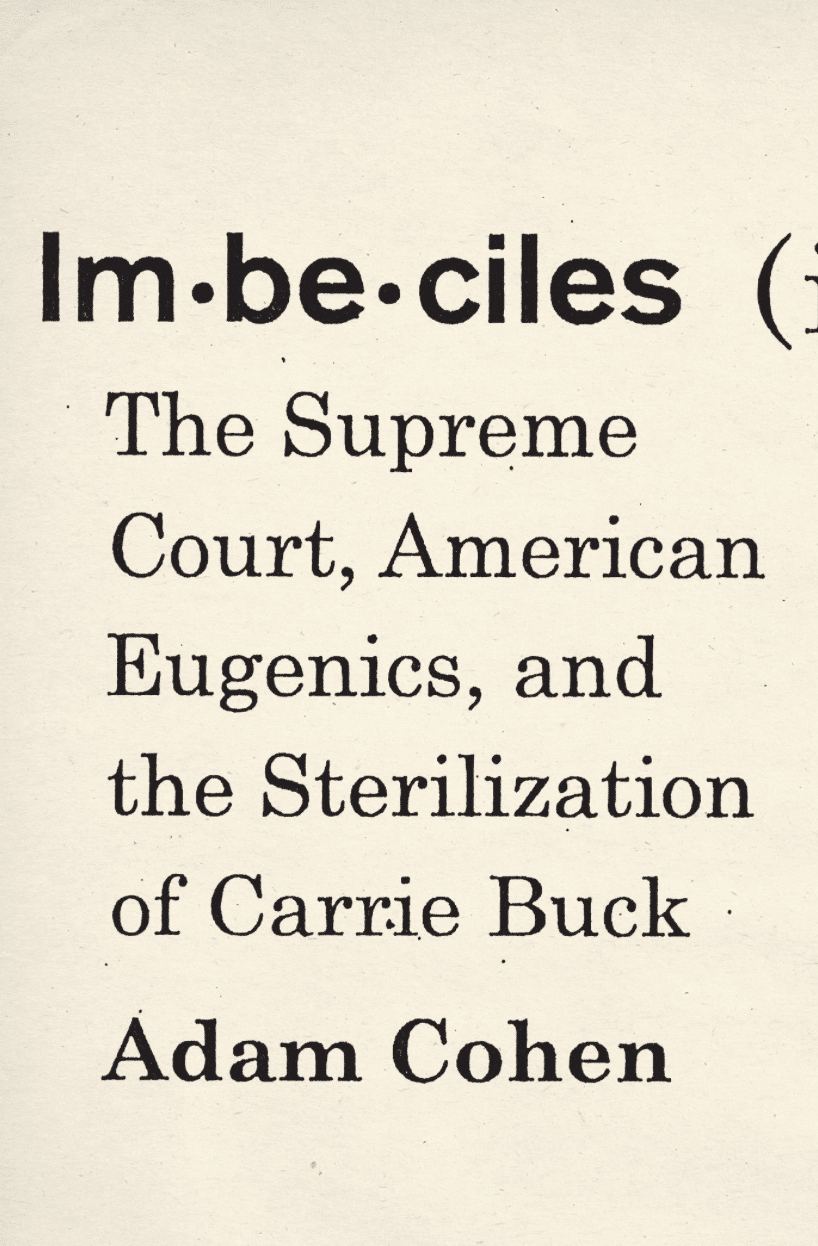 Imbeciles: The Supreme Court, American Eugenics, and the Sterilization of Carrie Buck
Imbeciles: The Supreme Court, American Eugenics, and the Sterilization of Carrie Buck
By Adam Cohen
“Three generations of imbeciles are enough.” This quote from the much vaunted Supreme Court justice Oliver Wendall Holmes is shocking to modern ears. However, Holmes’ statement was reflected by many Americans in the early part of the twentieth century who believed it morally justifiable to sterilize “imbeciles” so they couldn’t reproduce and bring about the “decline of the national stock.”
The eugenics movement in the United States was extremely popular among our leaders and at most prestigious universities who were in favor of sterilizing or segregating the lowest ten percent of the population. Those in the lowest ten percent included the “feeble-minded, insane, epileptic, inebriate, criminalistic and other degenerate persons.” Unfortunately these categories also began to include those who were “weaklings” or “worthless race types.” As a side note, Indiana was the first state to adopt a law allowing sterilizations to be performed on those who were deemed unfit to reproduce.
In order for forced sterilizations to become the law of the land, it was necessary for it to receive the blessing of the Supreme Court. This is where Carrie Buck, an unassuming teenager from Virginia became the guinea pig in our nation’s sad history with eugenics. While eugenics fell out of favor near World War II, the writings and studies from the movement sowed the seeds for Adolf Hitler’s racial policies in Nazi Germany. Hitler is said to have written a fan letter to a noted American eugenics author stating that their ideas were his “Bible.” This book is a deeply disturbing look at how ideas that we would consider abhorrent today became morally acceptable and even deemed charitable during the early twentieth century.
Review By: Brad Howell
